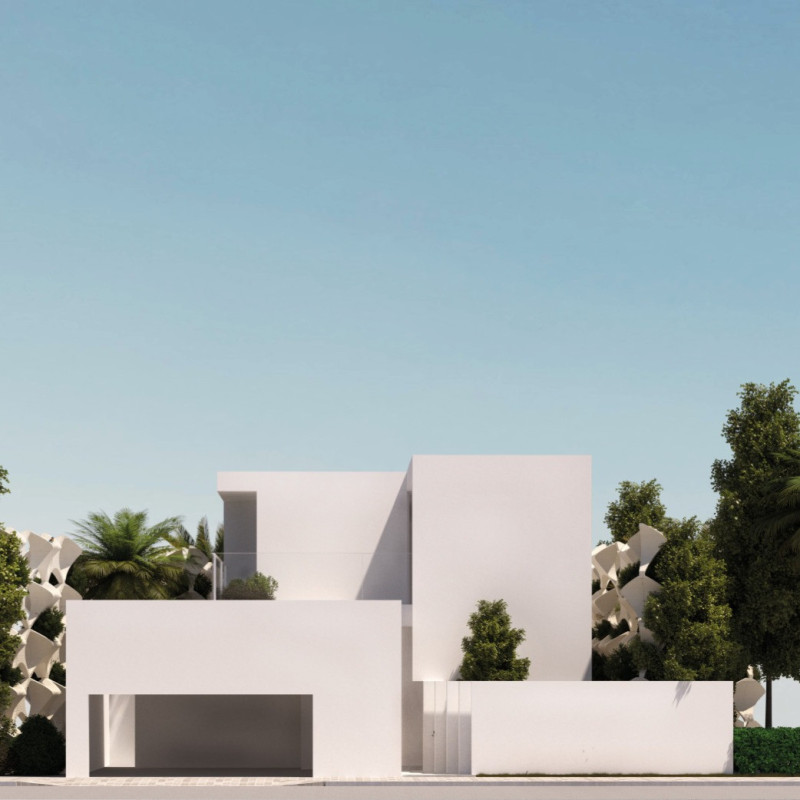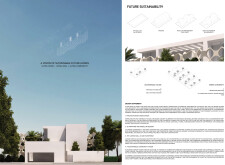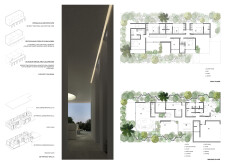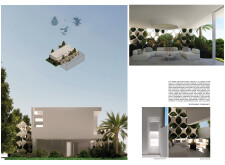5 key facts about this project
## Overview
Located in Dubai, this residential design prioritizes sustainability and innovative building techniques within a rapidly evolving urban context. The project aims to integrate advanced technology with environmentally responsible practices, enhancing both individual living experiences and the well-being of the community. The framework promotes a symbiotic relationship between inhabitants and their environment, redefining the concept of home as both a shelter and an active contributor to the ecosystem.
## Spatial Configuration
The architectural massing employs simple geometric forms, primarily rectangular shapes, influenced by traditional vernacular architecture. This choice ensures efficient spatial utilization while reflecting the cultural aesthetics inherent to Dubai. Notable is the modular arrangement, enabling flexible internal configurations that adapt to varying programmatic requirements. The design promotes versatility, ensuring optimized usage across diverse living spaces.
## Material Selection
The project's material choices underscore its commitment to sustainability. Key components include:
- **3D Printed Concrete**: This method reduces waste and allows for rapid construction, facilitating complex design elements while maintaining structural integrity.
- **Living Wall Systems**: Incorporating plant life into building facades enhances natural cooling, aesthetics, and biodiversity.
- **Solar Panels**: These are integrated into the design to harness renewable energy, contributing to the project's self-sufficiency and reducing reliance on traditional energy sources.
## Community Integration
The design emphasizes the creation of a cohesive community through shared spaces that promote social interaction among residents. Carefully designed landscaping blurs the boundaries between indoor and outdoor living, enhancing communal engagement and responsibility. Outdoor features such as shade structures offer relief from the sun while serving as venues for gatherings. The integration of natural landscaping also supports urban biodiversity and contributes to ecological sustainability within the metropolitan environment of Dubai.
## Functional Elements
The project's use of advanced technologies is fundamental to its innovative approach. Key features include:
- **Modular Construction Techniques**: These enhance customization options and allow for adaptable living spaces that can evolve alongside resident needs.
- **Automated Irrigation Systems**: These systems work in concert with living wall technology, optimizing water usage in a sustainable manner.
- **Energy Generation Systems**: By utilizing solar energy, the design addresses both energy efficiency and the potential for surplus energy contribution to the local grid.
This comprehensive approach highlights the project's dedication to aesthetic appeal, technological integration, and community enhancement while addressing environmental challenges in urban living.






















































